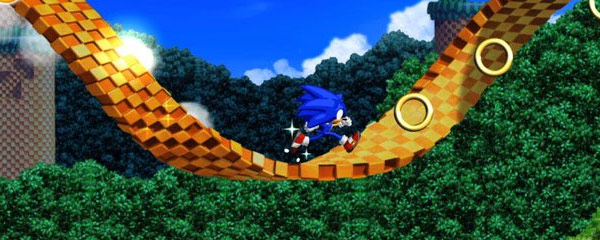
Retro revivals are a hot commodity right now. With the advent of digital download services like Xbox Live Arcade, PSN, and WiiWare opening new opportunities for publishers to create games an incredibly popular option has been to mine the back catalogs of games with new old-school renditions of classics. Capcom started the trend with the high watermark of Mega Man 9 and other companies soon followed like Konami with its ReBirth series (Gradius, Castlevania, and Contra) and Hudson Soft with its lineup (Adventure Island, Bonk, and Captain Rainbow) with varying levels of success.
The best of these games such as the aforementioned Mega Man 9 succeed by attempting to distill the retro game down to its core. In 9 this was done by taking Mega Man back to the bare basics of his abilities: Mega Buster, jump, and defeating Robot Masters. There were no slides, no charged shots, and no Proto Man (for the most part). Outside of a few additional flourishes like screws for the in-game shop it was as close to a direct sequel of Mega Man 2 in terms of gameplay evolution as imaginable.
But removing gameplay by itself shouldn’t make a good (retro) game. After all by themselves none of these additions made the core Mega Man gameplay terrible. In fact both slides and charged shots are effectively used by the optional DLC character Proto Man with nil effects on the quality of the game. So why did these gameplay removals become the example of addition by subtraction?
If you ask Mega Man fans, the original series of Mega Man 1-6 on the NES went downhill due to an increasing focus on gimmicks over genuine interesting gameplay. Chalk it up to running out of ideas after so many iterations or bored developers, but its undeniable as the series went on the weapons and designs of the Robot Masters became focused on one-note throwaways, the level design grew sloppy from overuse of additional gameplay tweaks like Rush’s add-ons, and the series went into a tailspin of sorts. After a break of nearly 15 years Mega Man 9 represented a renewal of sorts. And by removing those gimmicks and tweaks there was an opportunity to tailor the levels entirely to genuinely exciting gameplay built from the core foundation. Because the levels of 9 can be played entirely without those gimmicks and additions the design is solid, fun, and in classic Mega Man.
Which brings us to the discussion on hand. The first real information about the latest game in the Sonic series arrived today and Sega will be attempting to take the retro revival route like many others. And for good reason as Sonic is perhaps the character in most need of a decent revival at this point. Sonic post-Genesis has been on a continual decline towards irrelevance and its only been the goodwill efforts of other developers outside of Sega who have managed to keep the blue hedgehog with some semblance of dignity (Smash Bros. Brawl being perhaps the best game with Sonic in past years and being developed primarily by Nintendo).
So with Sonic 4 here’s hoping they stick to their proclaimed mantra of momentum over speed and exploration over races. Looking back at some of the classic maps from the heydays of Sonic gives you a sense that Sonic was never truly about getting from point A to point B. The levels are often sprawling endeavors that require equal parts speed with patient exploration. In these classic Sonic games going fast was never as important as knowing where to go fast and where to stop and slow down. It’s this quality that hopefully Sega can emulate for a successful retro revival.
So even if they include minor things like Dr. Eggman over Robotnik or green eyes vs. black or even the a homing attack as long as they nail the core level design Sonic can finally be Sonic again. That core level design built upon solid principles of skills that define the venerable blue rodent for so much of our childhoods.
Leave a Reply